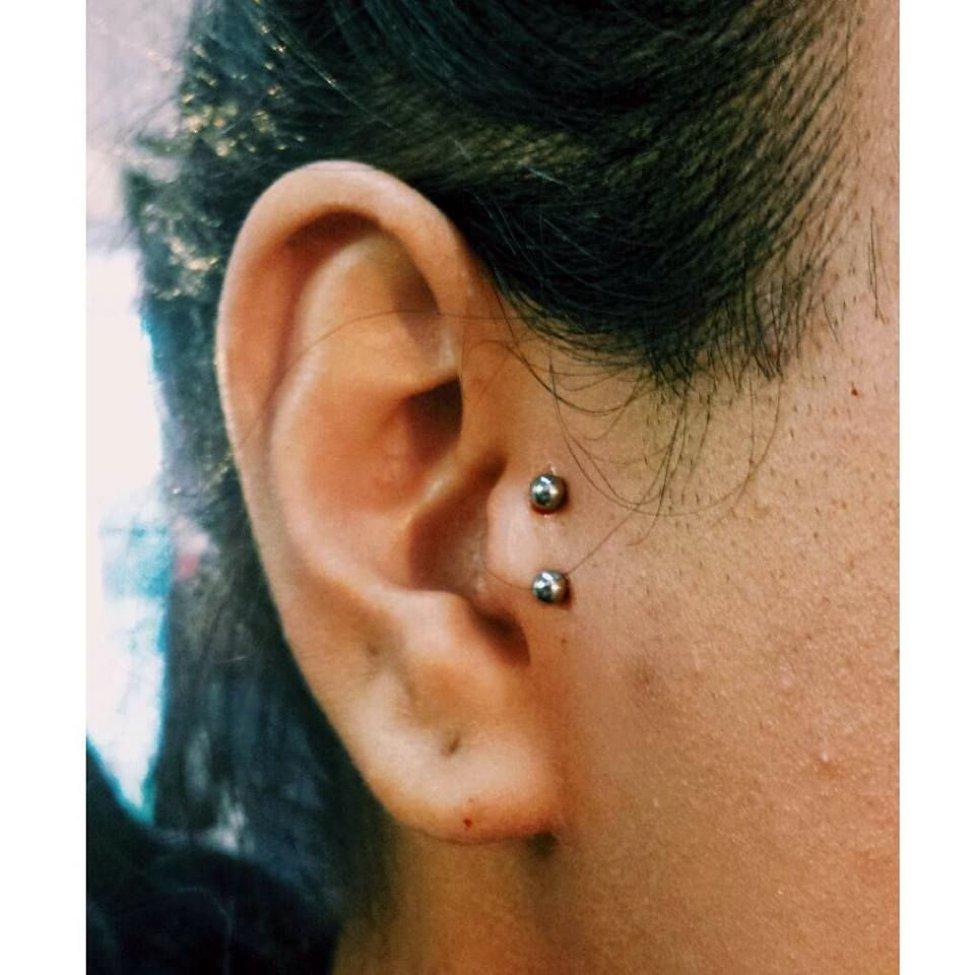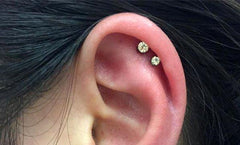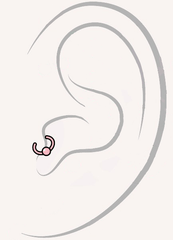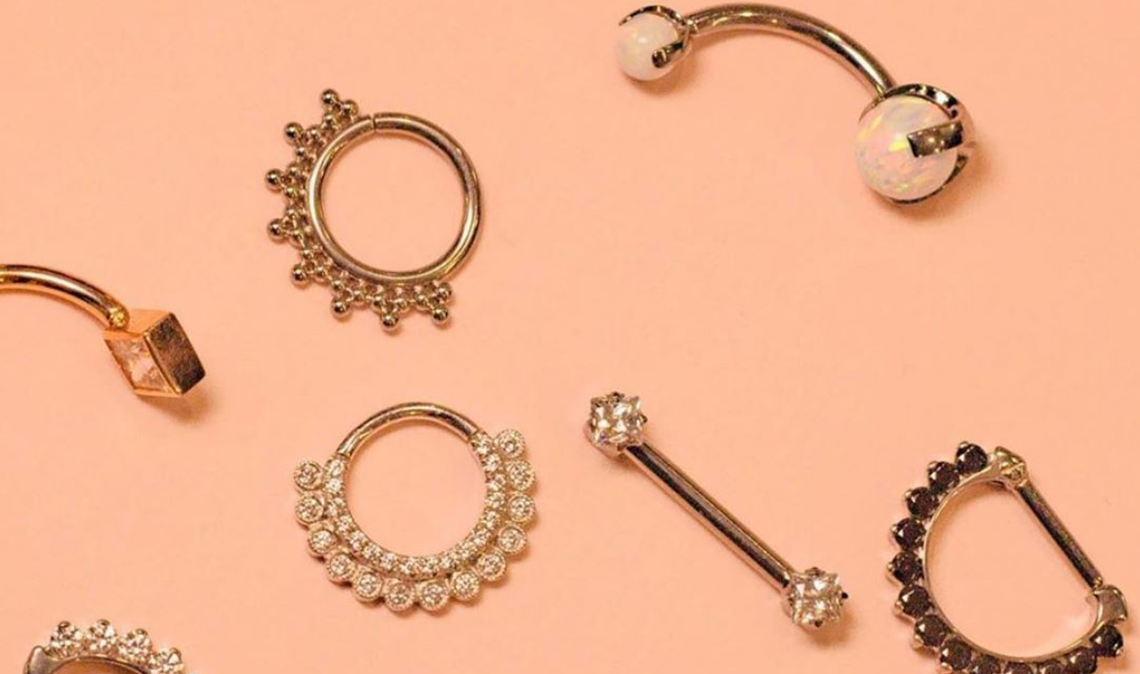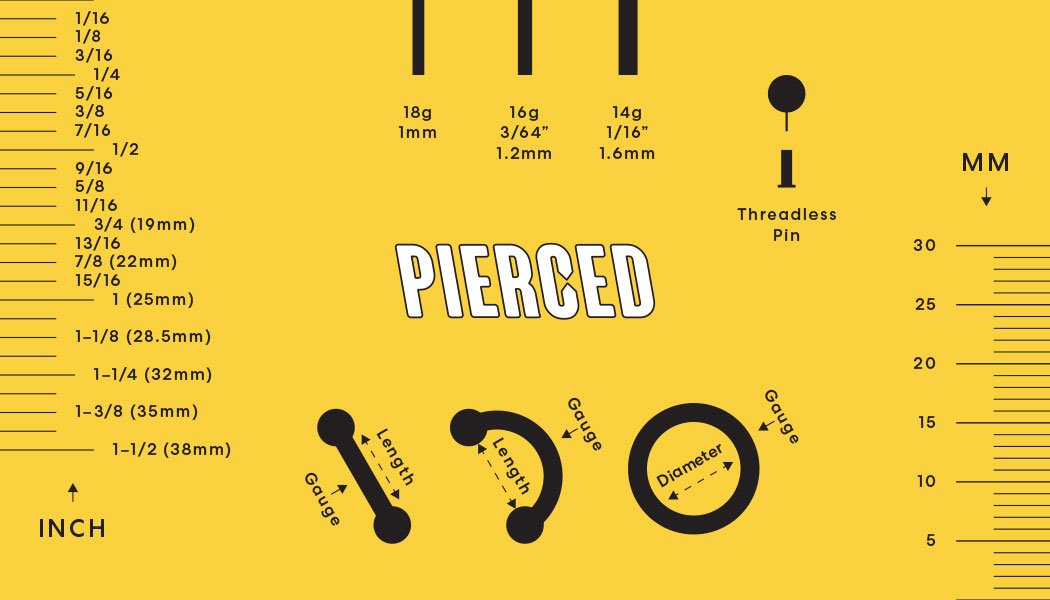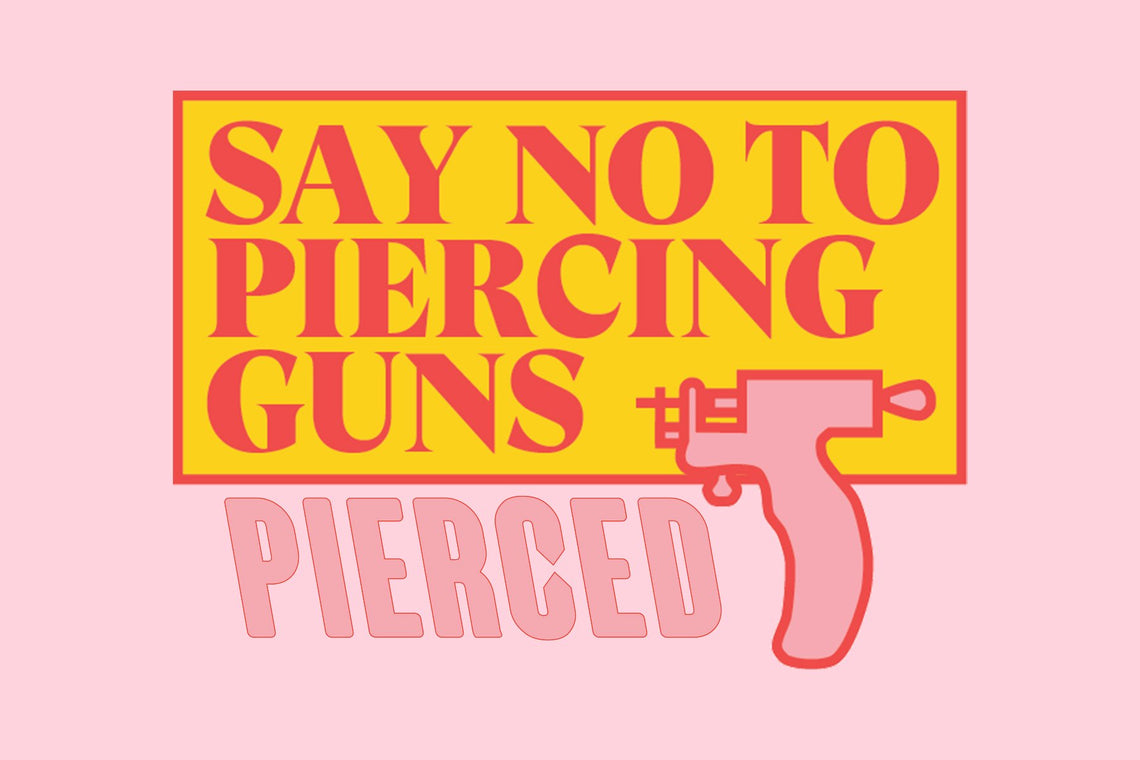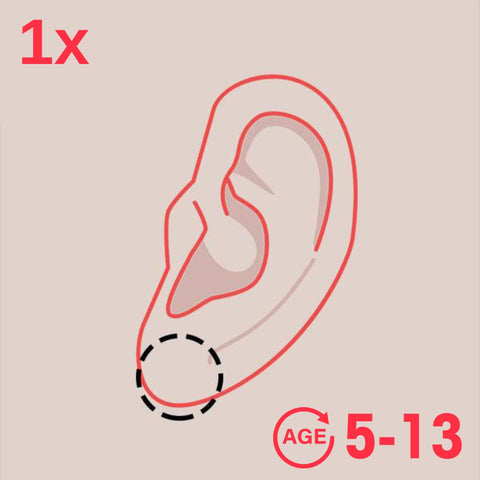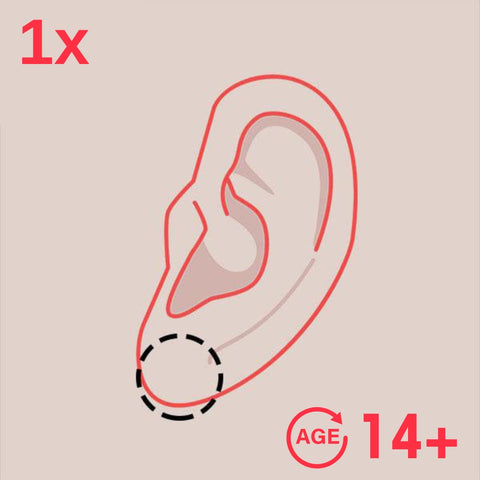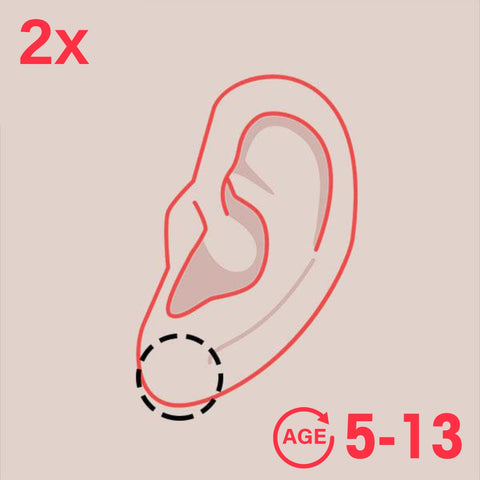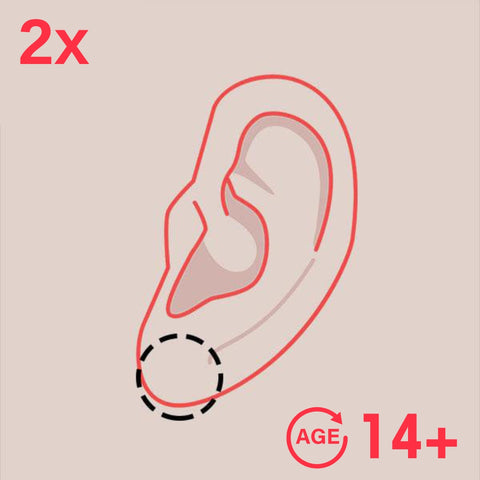Are you considering getting a tragus piercing? This trendy and stylish ear piercing has gained immense popularity in recent years. Whether you're a piercing enthusiast or just looking to enhance your ear aesthetics, tragus piercings offer a unique and captivating look. In this comprehensive guide, Pierced presents a detailed overview of tragus piercings, covering everything from the procedure to aftercare, to help you make an informed decision and ensure a successful piercing experience.
What is a Tragus Piercing?
The tragus is a piercing that goes through the small cartilage flap that partially covers the ear canal. It is almost directly below the location of a daith piercing. Due to its placement, not every ear is suitable for a tragus piercing.
Can I Get A Tragus Piercing?
Generally, as long as your tragus is large enough you can get this piercing. The common logic is: if it’s big enough to grab, it’s big enough to pierce. While this test is a good at-home indicator, it’s still best to talk to a professional piercer.
A professional will look at the size and shape of your tragus to make sure the piercing is safe. It’s uncommon for a tragus to be too small, but it does happen. Trying to pierce this area can result in piercing behind the tragus if it is not large enough. This can affect your ability to chew.
Do Tragus Piercings Hurt?
To some degree, all piercings hurt. Pain tolerance difference varies between individuals, so we rank tragus piercings as low to moderate on the pain scale.
In our do piercings hurt article, we rank most cartilage ear piercings as a 5 or 6 out of 10 on the piercing pain scale. Fleshy areas, like lobe piercings, are generally less painful than cartilage piercing. So thicker cartilage often means a more painful piercing, but the tragus is an exception.
Although the tragus is thick cartilage, it also has very few nerves. As a result, there is usually very little pain, despite the popping sound of the needle piercing through.
Is A Tragus Piercing Dangerous?
The tragus piercing is fairly low-risk. Of course, as with any piercing, there are some potential risks. But, so long as you take the right precautions, use a professional piercer, and follow your aftercare plan, you can manage these risks.
As far as tragus-specific piercing risks, the culprits are too small jewellery or too small of a tragus. As discussed earlier, trying to pierce a tragus that is too small can result in damage to the surrounding area.
This risk is higher if not using a professional. Firstly, the professional recognizes whether your ear shape and size makes this piercing appropriate. If not, they will recommend an alternative, such as a daith piercing. Secondly, the thickness of the cartilage can make this a more difficult piercing for a piercer lacking training and experience.
If the jewellery is too small or too tight the tragus itself can swell up substantially. This causes a few problems. The most noticeable issue is pain. The swelling puts a lot of pressure on the jewellery which can be quite painful. The other is that the swelling for this issue is intense. You can treat it with a salt soak, but in worst case scenarios the jewellery may need to be cut out.
This issue can be easily avoided by consulting with a piercing artist before inserting the jewellery. They will help you select piercing jewellery that is appropriate and safe.
Tragus Piercing Jewellery Types
Tragus piercing jewellery is usually smaller. It’s important to keep functionality in mind when choosing your jewellery here. A large piece of jewellery can get in the way when talking on the phone. The most popular tragus jewellery are rings, followed by studs and then barbells.
A ring is a nice, subtle piece of jewellery that looks cool and won’t get in the way. A barbell, on the other hand, is more attention-grabbing, directing the eye towards the piercing. Most barbell jewellery won’t get in the way of using a phone either.
A stud can be either subtle or make a statement, depending on its ornamentation. You can get simpler stud jewellery with a gold or titanium ball. A flashy diamond stud can complete a look, or a cool design can make a statement or flash some personality.
Choosing a stud is a safe option, so long as you consult with your piercer. If the jewellery is too small or tight it can cause inflammation.
For initial piercings, it's recommended to opt for jewelry made of high-quality materials like surgical stainless steel, titanium, or solid gold. These materials are hypoallergenic and less likely to cause adverse reactions.
How to clean and care for a new tragus piercing
Proper aftercare is vital to ensure the healing process goes smoothly and to minimize the risk of infection. Pierced will provide you with detailed aftercare instructions, but some general tips include:
- Clean the piercing twice a day with a saline solution or sterile saline wound wash.
- Avoid touching the piercing with dirty hands.
- Avoid submerging the piercing in bodies of water like pools, hot tubs, or lakes until it's fully healed.
How Long Does It Take A Tragus Piercing To Heal?
The tragus has a wide variation in healing time. Generally, a tragus piercing takes between 1 and 6 months to heal. We recommend most people plan for closer to 3-6 months. Factors like aftercare and ear shape can affect healing time.
As with any piercing, how you care for it will affect how long it takes to heal. Your piercing artist should provide you with an aftercare plan that reduces risks and encourages healing. Sticking to this plan results in faster healing and a better-looking piercing.
Aftercare is your responsibility, but you can reach out to your piercer with any questions or concerns throughout the process. The factor you cannot control is ear shape. Generally speaking, a larger tragus is more forgiving. As a result, a smaller tragus is more likely to have a longer healing period.
What are the potential risks of tragus piercings?
- Infection: Poor aftercare or improper hygiene practices can increase the risk of infection.
- Keloid formation: Some individuals may be prone to developing keloids, which are raised scars that can form around the piercing.
- Cartilage damage: Improper piercing techniques or trauma to the tragus can lead to cartilage damage.
Conclusion
Tragus piercings offer a unique way to express your personal style and stand out from the crowd. By choosing a reputable studio like Pierced and following proper aftercare guidelines, you can ensure a safe and successful tragus piercing experience. Remember to consult with a professional piercer and prioritize your health and safety throughout the process. With the right care and attention, your tragus piercing will become a stunning addition to your individuality and self-expression.
Contact Pierced to schedule an appointment.
Piercing Studios Near You
Mississauga
Square One Shopping Centre
100 City Centre Drive, Mississauga,
ON L5B 2C9
Phone
+1 (905) 232 -7226
Need an Experienced Piercer in Mississauga?
Working with an experienced piercer can make all the difference when it comes to your piercing experience. If you’re in the Mississauga, Ontario area and have any questions about ear piercing, body piercing or jewelry, give us a call or stop by our piercings studio today. We’d love to help walk you through what to expect and help you choose the right option.
